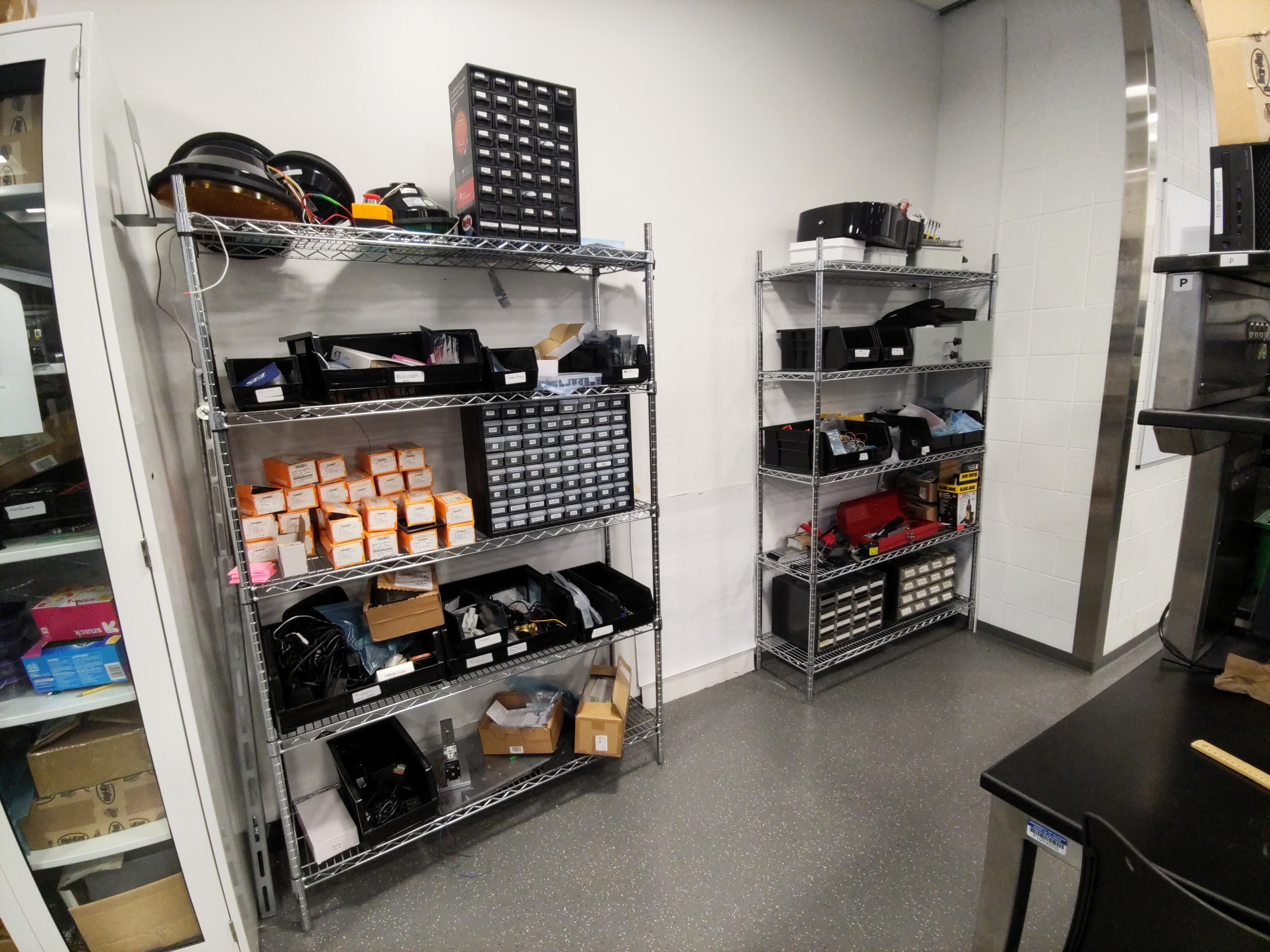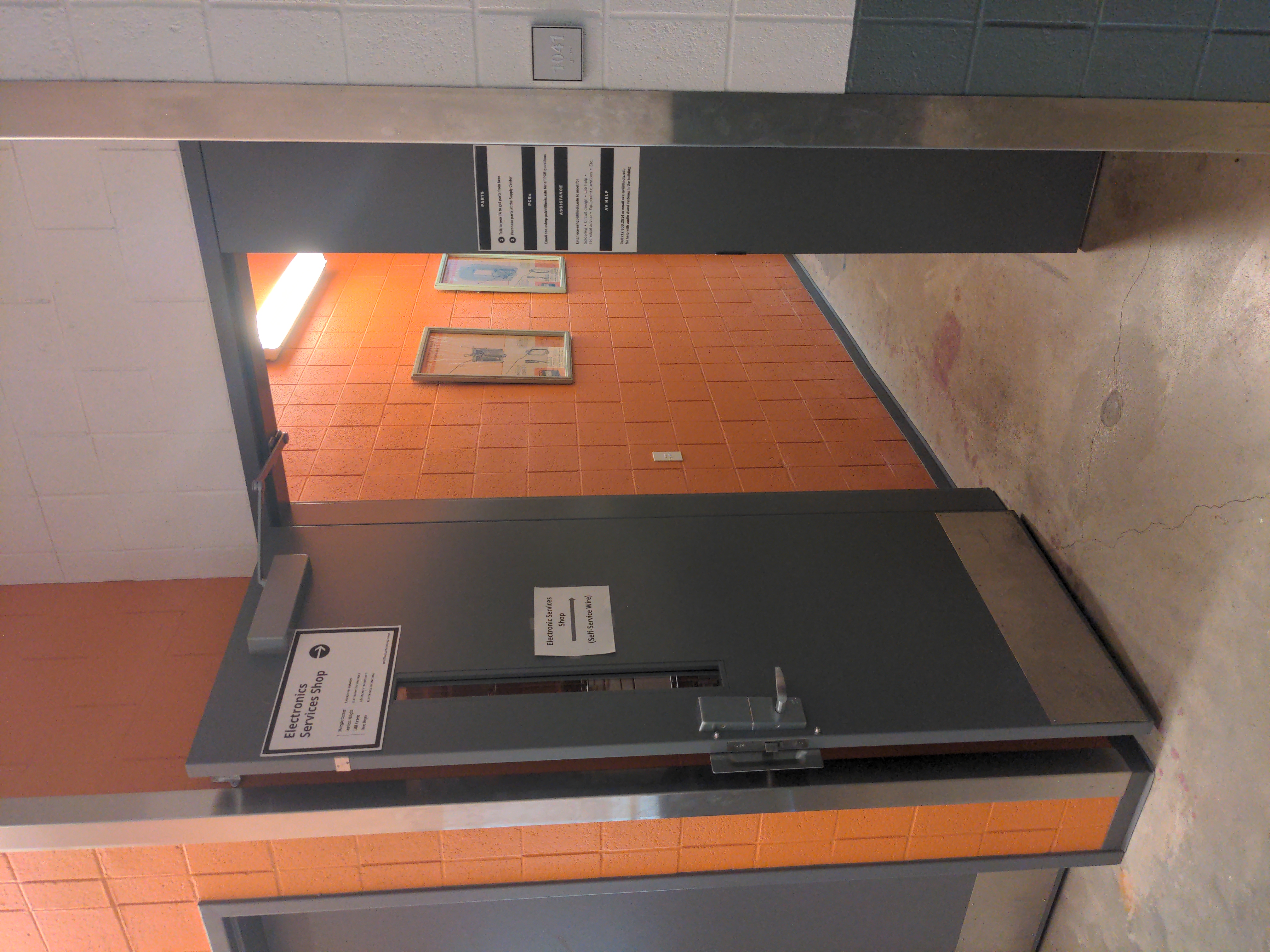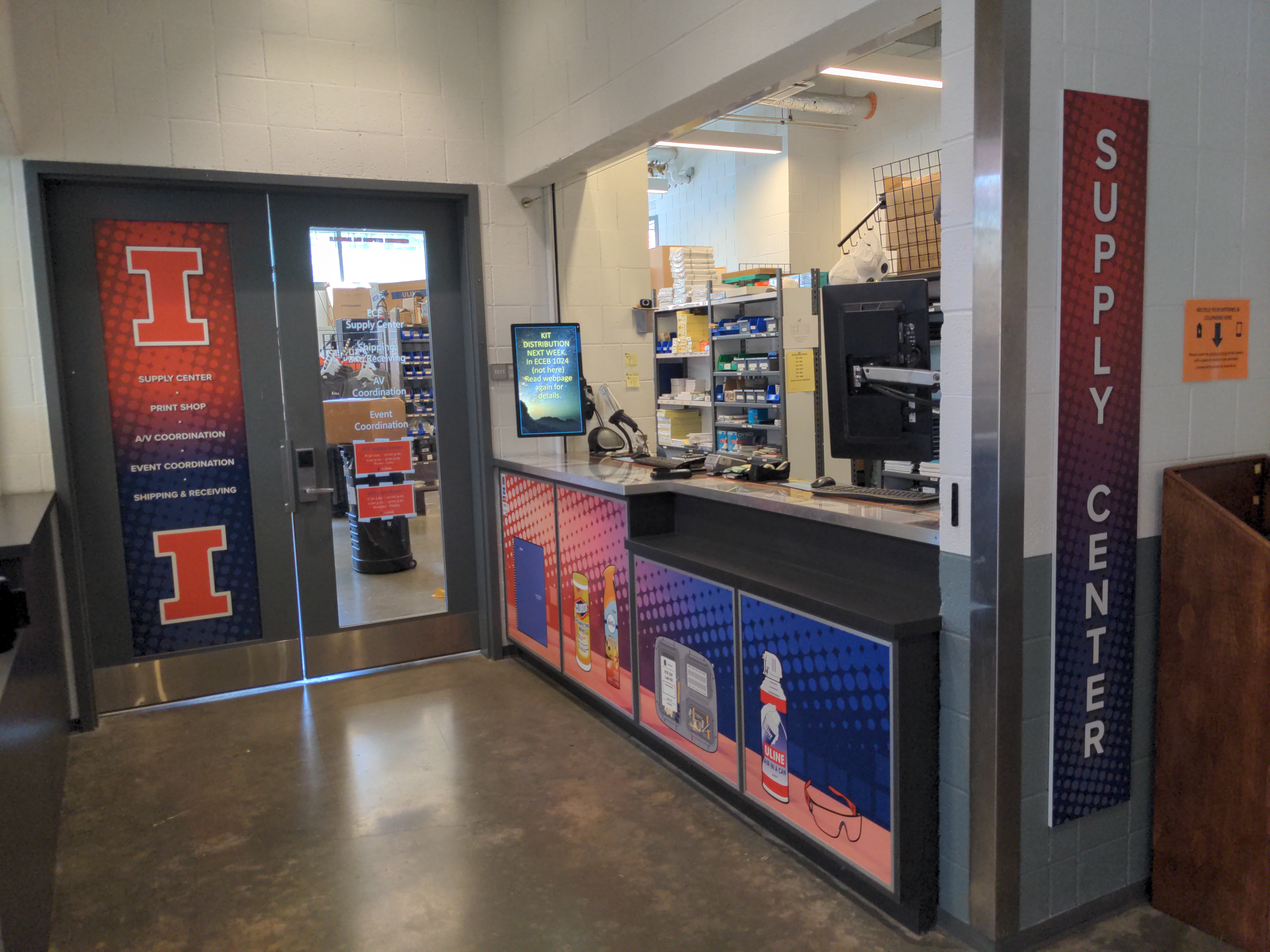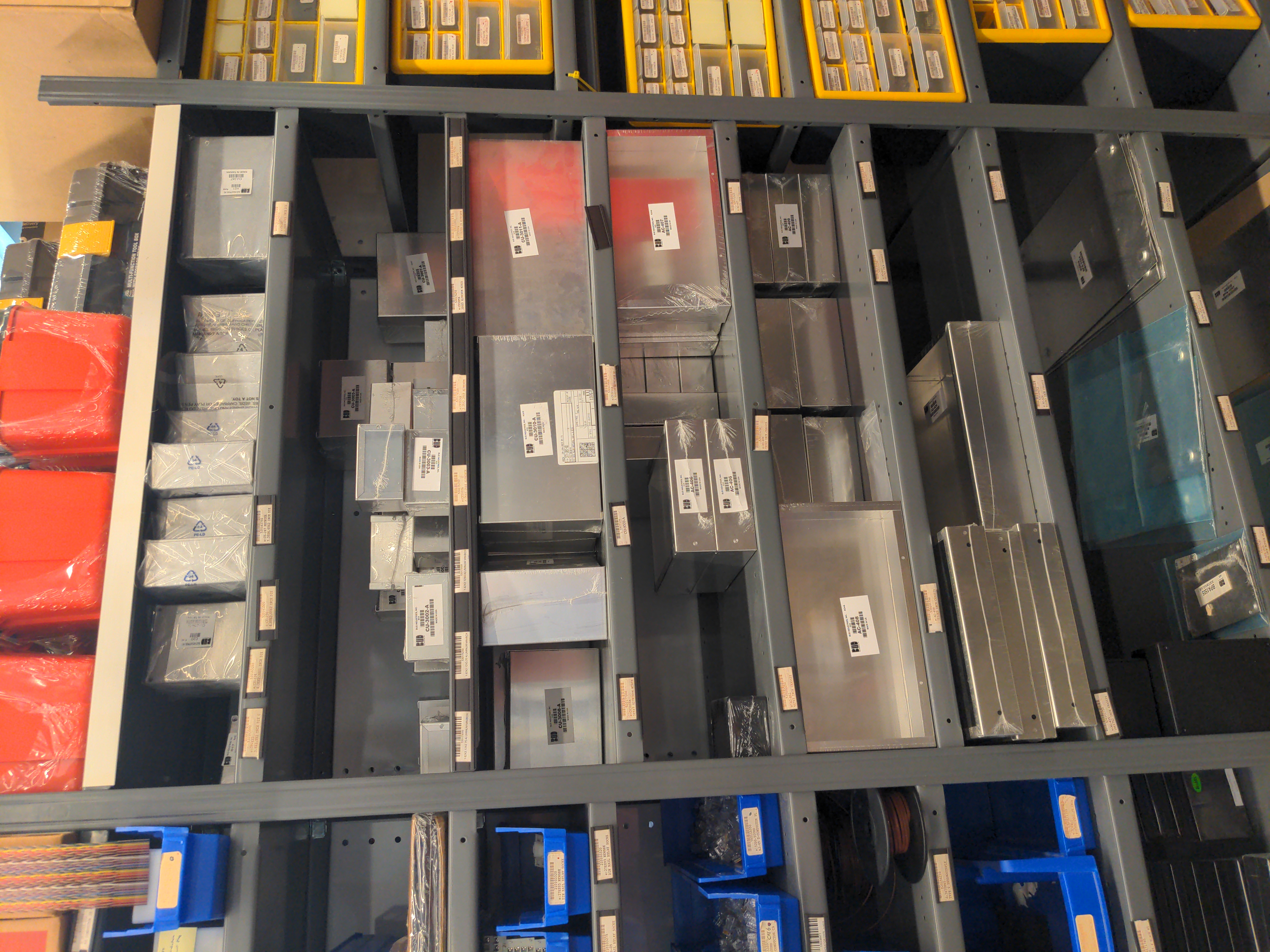Getting Parts for Your Project
Student groups have a budget of $50 per student as of fall 2023. This money can be accessed through your TAs CFOP number. The ways parts can be sources are listed below in order of desirability.
1. Lab Kit
Each group is issued a locker and lab kit. A lab kit should include banana plugs and a breadboard.
2. ECEB 2070 Lab
There are many parts available for free in the ECEB 2070 lab such as THT passive components, MOSFETs, and line operated DC power supplies.

3. ECE 445 Inventory
Your TA can check out parts ECE 445 stores in white cabinets at the back of the lab: link. This inventory spreadsheet has not been updated in some time. There are items on this list that may not be in the cabinets and there are items in the cabinets that may not be on this list. Use this form for checkout: link
4. Electronics Services Shop (A.K.A. ECE Services Shop)
The Electronics Services Shop is located on the first floor of ECEB near the cargo elevator in ECEB 1041. They have a large stock of THT ICs (such as op-amps), potentiometers, motors, resistors, connectors, etc. Visit them when they are open to pick up parts.
Recently, they have started stocking 0805 surface mount passive components, crystal oscillators, microcontrollers, and linear regulators. The microcontroller portion of your board can probably be built entirely with parts from the Electronics Services Shop. You do not need to pay for parts you obtain from the Electronics Services Shop.To obtain parts from the e-shop, please contact your TA with a list. Your TA must email the e-shop and they will collect the parts. Your TA will get an email when the parts are ready. Your TA must pick up the parts from the e-shop . The e-shop will not release the parts to you.




5. ECE Supply Center (A.K.A. ECE Store)
The ECE Supply Center is located on the first floor of ECEB in room 1031 near the loading dock. You must pay for parts out of pocket or with your TA's CFOP number. They stock breadboards, project boxes, jumper wires, THT LSI logic ICs, THT analog ICs, and more. This is a fantastic resource for building prototypes. You can search their catalog here: https://my.ece.illinois.edu/storeroom/catalog.asp.


6. Free Samples from Companies
It should be mentioned that companies many times are willing to provide small quantities of their products to students engaged in design projects. You might consider approaching the manufacturer directly, particularly regarding their newer products which they are interested in promoting. Don't count on success with this, but it has often been very useful.
7. MY.ECE Ordering (last resort)
You can order parts from amazon, digikey, mouser, etc. using the money provided to you by the course with your TA's CFOP number. Orders placed through this avenue must be approved by your TA through myECE. If you order multiple parts through digikey or mouser, please provide a shopping cart link. This method of ordering is best for parts that cannot be found in any of the sources listed above. This includes SMD MOSFETs, high performance ADCs/DACs, power converter ICs, SMD op amps, modem ICs, etc. Please refer to this tutorial for more instructions: http://courses.engr.illinois.edu/ece445/lab/resources/ece_purchasing_app_tutorial.pdf
Personal Purchases
It is always possible and encouraged to purchase your own parts from a local store (Radio Shack, Best Buy, etc.) or order them from online vendors. Personal purchases will not be reimbursed by the department.